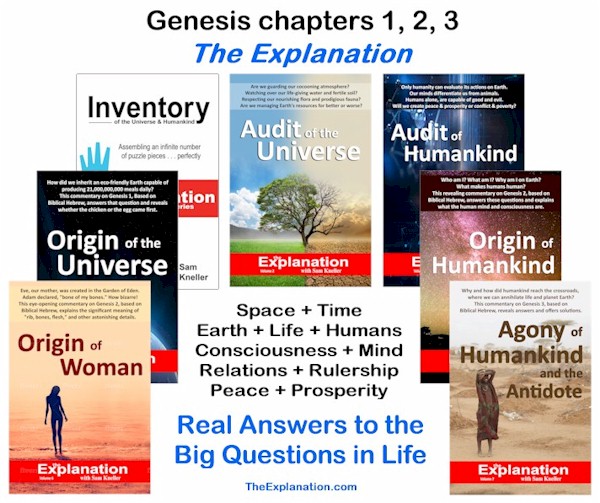Contents
The human body defies imagination. We take it for granted. Seven billion on the planet all functioning identically yet, each one unique. How can that be?

The human body defies imagination. We take it for granted. Seven billion on the planet all functioning identically yet 3.5 million men and 3.5 million women – 2 totally different but complementary sexes, and each human body is unique. How can that be?
Bodies Alive
We are inside a doctor’s waiting room, passing the time by reading through health and fitness or science magazines, waiting to be called for our appointments. We are here for a check-up, but it will be quite different from any we’ve had in the past.
(chapter 8.1)
The nurse announces our names as a group. We’re taken to an observation room where we watch a medical team examine a patient. They’ll be using an x-ray machine, a blood pressure monitor, an MRI, and the full works as well as some specialized equipment provided by Galacti.
We ponder the workings of our own human body, knowing that our hearts beat sixty to eighty times a minute for a man and that the skin is our largest organ with a surface area of two square meters (the size of a tiny capsule apartment in Beijing).
We learn from minidisplay stations that our eyelashes take three months to grow and that hair is one of the fastest-growing tissues in the human body, second only to bone marrow. However, many of us may not have thought much about our bodies’ inner workings beyond our skin, hair, and heartbeat.
The human body is unique, and each of our bodies is alike in anatomy. For example, when we walk (we’re asked to demonstrate), we use the exact same muscles: calf, thigh, and buttock muscles as well as the connective tissues of ligaments. Our trunk muscles in the core of our torso and abdomen work with our back muscles to maintain our balance and posture.
In addition, our bodies are composed of the same elements. Besides the four major elements (the hydrogen, nitrogen, oxygen, and carbon that make up 96 percent of our bodies as we saw in chapter 7), we’re surprised to learn the number of radioactive elements. There’s thorium, uranium, potassium-40, radium, carbon-14, and tritium, plus as many as sixty others. There’s no real consensus, and I’ve seen figures estimating that there are seventy or more trace elements in our bodies.
We’re surprised to learn the number of radioactive elements in the human body. There’s thorium, uranium, potassium-40, radium, carbon-14, and tritium, Share on XIt’s said that only twenty-five may actually be active, but if I may say so, I’d take that with a grain of salt considering what was discovered regarding “junk DNA” and its now well-known and important role, which we saw in the previous chapter.
Remember the role oxygen has in the human body: it is vital to strengthen the heart, lessen fatigue to the brain, aid the immune system, and calm the nervous system. We can view the other elements in the MRI thanks to Galacti’s enhncement.
We can see the calcium (1.5 percent) glowing white inside the patient’s bones and teeth. Calcium is vital for their strength and is also thought to help lower blood pressure.
Next, we see phosphorus (1 percent) in green inside the bones. Potassium (0.25 percent) looks orange inside the heart and nerves. It keeps the heart, brain, kidneys, and other organs healthy, maintains the water balance inside the body, acts as an electrolyte, and helps lower blood pressure.
Sulphur (0.25 percent) glows yellow inside a microscopic projection of amino acid chains, as well as inside the brain, nerves, bowels, and liver. This mineral lubricates joints, helps cellular respiration and enzyme functions, boosts muscle health, and increases blood circulation. In addition, it’s a key component in the hormone insulin, which is needed to regulate blood sugar.
Sodium (0.15 percent) shines pink in the nerves and water circulating throughout the body. In proper amounts, sodium works with potassium, aids brain functions, maintains water balance and blood circulation, and protects heart health, among its other roles. Chlorine, (0.15 percent) which is present in the form of the negative ion chloride, shows up as navy blue. It maintains a normal balance of fluids in the human body.
Magnesium (0.05 percent), visible in the skeleton and muscles as well as in various systems throughout the body, is colored silvery white. It plays an important role in the structure of the skeleton and muscles and is necessary in more than 300 essential metabolic reactions. Iron (0.006 percent) is red. Iron is a key element in the metabolism of almost all living organisms.
It is also found in hemoglobin, which is the oxygen carrier in red blood cells. Fluorine (0.0037 percent) adds pale yellow to the teeth and bones on the scan. Outside of preventing tooth decay, it does not appear to have any importance to bodily health.
We see zinc (0.0032 percent), a trace mineral, as bluish gray in all cells of the body. We remember that it is an essential trace element for all forms of life and is important in immune function, DNA, and sexual health, and that’s just for starters. Copper (0.0001 percent), which adds traces of brownish red to the MRI palette, is important as an electron donor in various biological reactions. A sufficient amount of copper in the human body helps iron do its work properly.
Iodine (0.000016 percent), showing as bluish-black traces in the body, is required to make thyroid hormones, which regulate metabolic rate and other cellular functions as well as protecting brain health.
Selenium (0.000019 percent) shows itself as metallic red-gray in the thyroid and immune system (the lymph nodes, leukocytes, and white blood cells). It is essential for certain enzymes, including several antioxidants, and is also important in sexual health.
Chromium III (0.0000024 percent), colored steel gray, helps regulate sugar levels by interacting with insulin in the pancreas, though science does not completely understand the exact mechanism.
Manganese (0.000017 percent), which appears dark red in the bones, liver, and kidneys, is essential for certain enzymes. In particular, it is needed for those that protect mitochondria, our cellular energy factories, from oxidants.
Molybdenum (0.000013 percent), shown as a silvery black color in the liver, kidneys, and many other tissues in the body, is essential to virtually all life forms. In humans, it is important for transforming sulfur into a usable form and for eliminating toxic wastes from the human body.
Lastly, cobalt (0.0000021 percent), which appears violet-red in the red blood cells, kidney, liver, pancreas, and spleen, is an ingredient in vitamin B12. This vitamin is important in protein formation and DNA regulation.
The human body has trace amounts of cobalt. It is an ingredient in vitamin B12, important in protein formation and DNA regulation. Share on XThe proportion of these minerals in our bodies may be generally the same for each of us, but our need for specific amounts of these minerals in our diet is determined by our biochemical individuality, or our individual genetic makeup, which is coded by DNA.
We think about the unseen makeup of our own bodies, common to all human beings and yet unique to each individual.
The unseen chemical composition of our own bodies, common to all human beings and yet unique to each individual, why? Share on XAn injured lady from a car accident has just been wheeled in on a gurney. The doctors and several nurses devote their energies to the patient by attaching IV drips, checking the oxygen being pumped through the nose into the lungs, working to stabilize the patient, taking x-rays, and examining and documenting her condition.
All the while, they communicate their observations, knowledge, and decisions to each other.
Galacti tells us that is the reason we are here: to observe doctors and nurses at work with the human body, and especially how it functions, its capabilities, and how it needs to be taken care of if something goes wrong.
This post is an excerpt from chapter 8.1 of Inventory of the Universe.
The Explanation Blog Bonus:
Today just one video. It is a bit lengthy but, it is a must watch… even just the first 10 minutes about the special systems that ‘kick in’ at birth. Did you know that Mom delivers her antibodies to a baby via her milk until the baby’s immune system gets up to speed? (at 14 minutes into video) That, to adjust to the drastic drop in heat from the womb to room temperature the baby’s body automatically produces a special ‘brown fat’… that will disappear within months (12 minutes). There are so many ‘miracles’ in the human body.
Dig Deeper into The Explanation
Online Study Courses to Uncover the Mystery of Adam and Eve’s Nakedness… with no fuss. Free video mini-course revealing the God-intended meaning of Scripture via Biblical Hebrew. It’s so easy, it’ll blow you away. Join now and add new motivation to your Bible study.
Join The Explanation Newsletter to stay informed of updates. and future events. No obligations, total privacy, unsubscribe anytime, if you want.
The Explanation series of seven books. Free to read online or purchase these valuable commentaries on Genesis 1-3 from your favorite book outlet. E-book and paperback formats are available. Use this link to see the details of each book and buy from your favorite store.

Since you read all the way to here… you liked it. Please use the Social Network links just below to share this information from The Explanation, The Human Body, composed of Stardust – so Intricate, so Perfect



Trackbacks/Pingbacks